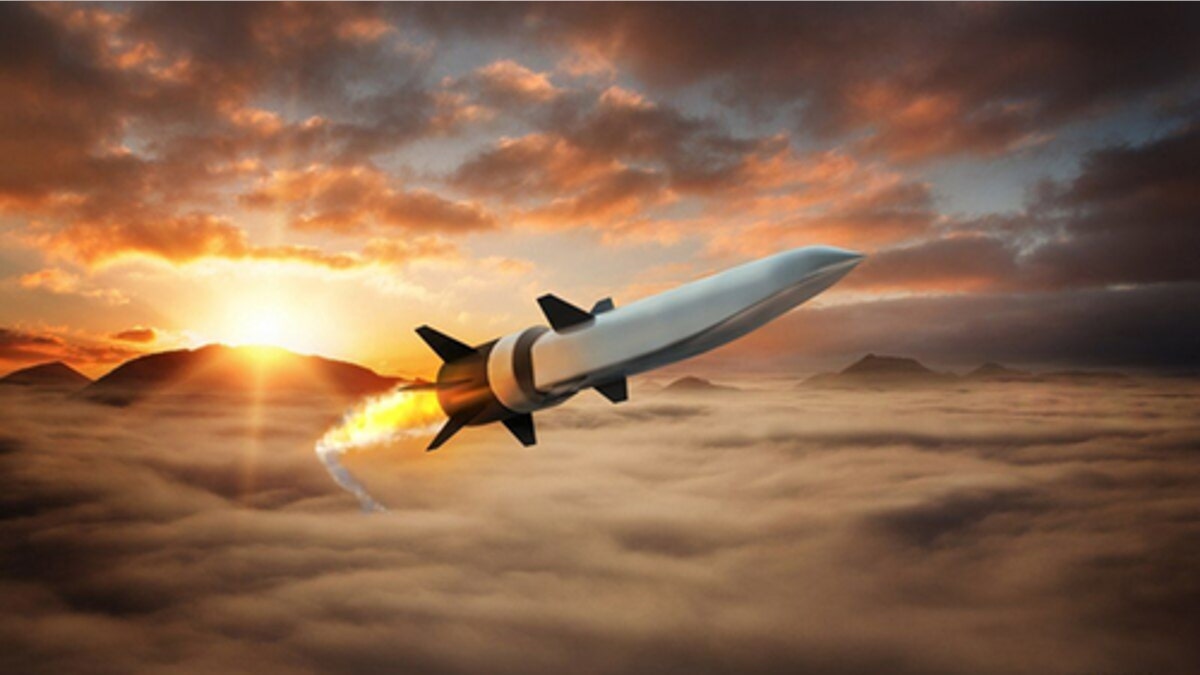
Artist's impression of a hypersonic weapon. (Raytheon)
They can take out targets faster than enemies can respond by destroying a wide range of air, sea, land and space targets. Traveling at five-times the speed of sound, they are nearly impossible to defend against and place fighter jets, ships, ground vehicles, satellites and ground assets at tremendous risk of nearly instant destruction -- they are hypersonic weapons.
Naturally, the risks and advantages of these weapons, many of which are basically here, are inspiring the military services to massively fast-track hypersonic weapons development. For instance, the Army Research Laboratory and Air Force Research Laboratory are now working closely together to develop hypersonics and, among other things, engineer a new generation of hypersonic weapons designed to come after the currently emerging arsenal. This would expand hypersonic mission options in new directions and introduce new air vehicle configurations.
This Army-Air Force collaborative effort includes a wide range of probing scientific research efforts, weapons prototyping, exploration of new materials, experimentation and the pursuit of innovative manufacturing strategies such as “additive manufacturing” or 3D printing. The Army Research Laboratory is, for instance, experimenting with existing materials as well as new combinations of metals and other substances.
NEW AIR FORCE NUCLEAR-ARMED ICBMS TO DEPLOY BY 2029
“We need high strength and high toughness materials. Hypersonic weapons are traveling very fast. They get hot enough to melt most metals, so you need a way to mitigate that. Additive manufacturing can help,” Dr. Brandon A. McWilliams, materials engineer, lead for metals added manufacturing, Army Research Lab, Combat Capabilities Development Command, told Warrior in an interview at Aberdeen Proving Ground, Md.
There are many advantages to 3D printing, which include an ability to engineer entirely new structures and material combinations first developed through advanced computer modeling. While early on in its development, 3D printing is already showing great promise, as it utilizes an advanced and well-refined technical method using powdered material, lasers and systems able to shape layered material. Many of the materials used in the process are still being certified and qualified.
“You are laying down one layer at a time from a digital data file. You have a digital model of whatever part you want to make...then you make slices of it,” McWilliams explained. “With additive manufacturing you can create complex geometries. You can change the wall thickness or lattice structures inside to reinforce it. A lattice structure is basically like a cellular structure, so if you think of an atomic arrangement structure as a honeycomb structure.”
AIR FORCE ARMS B-52 BOMBERS WITH PROTOTYPE NUCLEAR-ARMED CRUISE MISSILES
The Pentagon and military services are already having some success with accelerated hypersonic weapons testing and development, yet there is still much work to be done when it comes to refining the technology needed for current and future hypersonic weapons flight. As discussed by McWilliams, engineering weapons to move at five times the speed of sound relies upon an ability to manage, and in effect minimize, the heat of the weapons. Excessive heat at that speed can not only incinerate the weapon such that it cannot fly but can also disrupt or derail its flight trajectory.
Therefore, the fundamental challenge with hypersonic flight resides in this need to manage the extreme temperatures reached at those speeds, factors which can prevent, complicate or disable successful hypersonic flight. An area of focus within this sphere of inquiry, AFRL and ARL developers tell Warrior, relates to several complex aerodynamic challenges, such as managing the air flow surrounding the vehicle in flight. Referred to by scientists as a “boundary layer,” the air flow characteristics of a hypersonic weapon’s flight trajectory greatly impact the stability of the system - much of which relates to temperature.
“You can print things like conformal heat exchangers, which are ways to integrate cooling within a structure itself to help maintain a lower temperature,” McWilliams said.
CLICK HERE TO GET THE FOX NEWS APP
Working in close concert with Army scientists and weapons developers, the Air Force is moving quickly to better understand the heat flux on hypersonic weapons. This will allow us to do optimization on thermal management,” Tim Sakulich, Air Force Research Lab, director of materials and manufacturing and lead on implementing the Air Force Science and Technology Strategy, told Warrior in an interview last Fall at an Air Force Association Symposium. “We are designing these systems to provide the speed, reach and lethality we are looking for.”




















